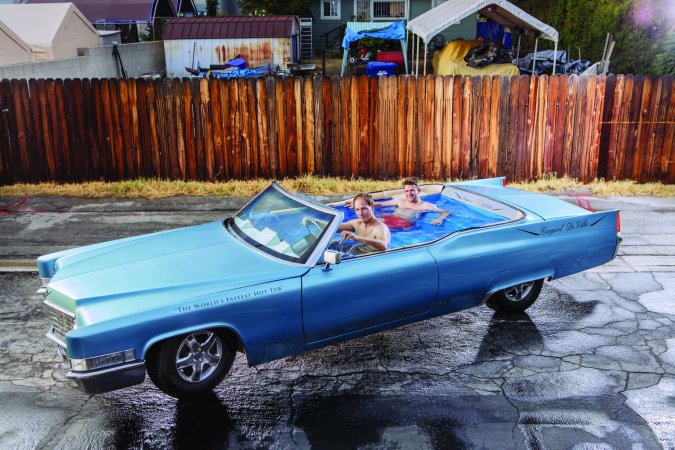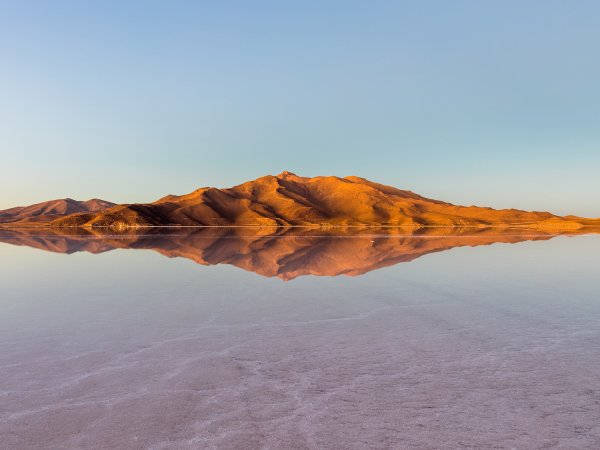

In a perfect world, this would have been the fourth day of the annual Bonneville Speed Week at the Bonneville Salt Flats. The salt flats have played host to land-speed races and records for over 100 years but this is the second year in a row that the races have been cancelled.
The extremely flat and smooth landscape is a magnet to racers, who can race their cars at insane speeds (hundreds of miles an hour in some cases) without worrying about the typical rules of the road. The problem is, the flat, white racing surface is ephemeral. Every year during the winter groundwater turns the flats into a very shallow lake. When the water evaporates in the summer, it leaves behind mud overlaid with a thick crust of salt, strong enough to support a car. That’s the idea anyway. This year, heavy rains and mudslides left all but 2.25 miles of the racecourse unusable. And a little over two miles is nothing to a car racing along at 300 miles per hour.
Scientists, industries that mine the salt for minerals, and car enthusiasts are trying to figure out what’s behind the larger decline of the salt flats, which have been shrinking steadily for decades. Among those implicated in the possible demise are companies who strip the salt of minerals, the rain, and climate change, but no one front-runner has been declared yet. A new study into the subject is expected to start later this year.
“Changes in weather patterns, and changes in the amount of precipitation or temperature will have a profound effect on the salt crust,” Brenda Bowen, a geologist who plans to study the flats this fall told National Geographic. “We can definitely expect to see some changes out there with climate change, and what those might look like? Well it’s hard to say.”
While the future of the place remains uncertain, one thing we do know a lot about is the salt flats’ past. A look through the Popular Science archives turns up mentions of the area as far back as 1883 in an article about landforms of the Southwestern United States. Then, in 1937 we covered the construction of British record-seeker George Eyston’s Thunderbolt, which broke records the next year racing at over 350 miles per hour. Take a look through the glory days of racing at the Bonneville Salt Flats. And keep your fingers crossed for next year!















